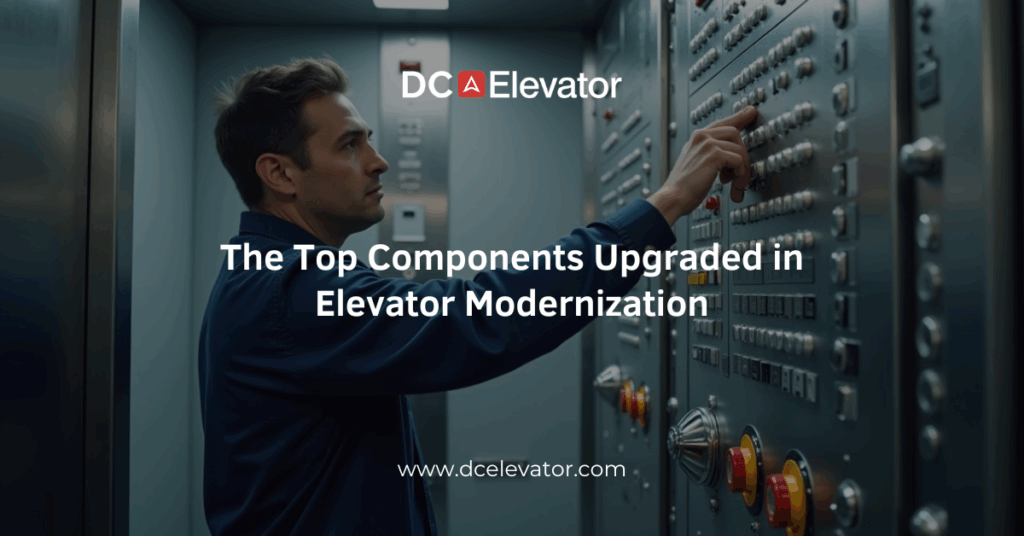Is your elevator system starting to feel outdated, unreliable, or slow to respond? You’re not alone. Many commercial buildings still operate elevators installed 20–30 years ago—and while they may still work, they’re far from optimal in performance, safety, or energy efficiency. According to industry reports, elevator modernization can improve system reliability by up to 60% while significantly reducing service calls and operational costs.
For property managers, building owners, and facility directors, understanding which components are typically upgraded during an elevator modernization can help you make informed decisions and plan for long-term building performance. In this blog, we’ll break down the key upgrades that make the biggest impact on safety, ride quality, and efficiency.
Why Modernization Matters
Modernization isn’t always about replacing the entire system—it’s often a strategic upgrade of specific parts to improve reliability and safety while extending the overall life of your elevators. Over time, wear and tear, code changes, and tenant expectations make full replacement less practical and more expensive than targeted modernization.
The Top Elevator Components Upgraded During Modernization
1. Controllers and Operating Systems
The brain of the elevator, the controller governs everything from floor selection to speed regulation. Older relay-based systems can be slow and inefficient, while modern microprocessor-based controllers provide smoother rides, better energy use, and faster door response times.
Industry Insight: Upgrading controllers can reduce wait times and eliminate common service issues caused by outdated software or hardware glitches.
2. Door Operators and Hardware
Frequent elevator downtime is often caused by faulty doors. Door operator upgrades enhance performance and safety by ensuring quicker, quieter, and more reliable opening and closing.
Common Challenge: Doors that misalign or hesitate often frustrate tenants and lead to increased service calls. Newer door systems are designed to operate seamlessly, even in high-traffic settings.
3. Hoist Machines and Motors
While the hoist machine may last decades, older motors can lose efficiency over time. Modernizing these systems often results in smoother starts/stops and less power consumption.
Building Example: A mid-rise office building that modernized its hoist motors saw energy savings of over 20% and reduced noise complaints from tenants.
4. Fixtures and Cab Interiors
Upgrading fixtures like call buttons, hall stations, and digital displays can greatly improve user experience and ADA compliance. Modern cab interiors, meanwhile, enhance aesthetics and reflect a building’s quality.
Quick Tip: If your building is being repositioned for higher-value tenants or guests, fixture and interior upgrades deliver noticeable value.
5. Safety Components
Upgrades to braking systems, emergency lighting, door restrictors, and communication devices ensure that the elevator complies with current codes and safety standards.
Facility Manager Insight: Periodic code updates may require specific safety enhancements—modernization helps you stay compliant without needing a full replacement.
Planning for Success: What to Expect
A successful modernization project is typically phased, prioritizing components based on age, performance, and code compliance. Partnering with a service provider experienced in modernization ensures you receive a customized upgrade path that minimizes downtime while maximizing value.
Conclusion
Modernizing your elevator system doesn’t have to mean starting from scratch. Upgrading key components like controllers, doors, motors, and safety systems can greatly improve performance, reduce operating costs, and enhance the tenant experience.
If your elevator is starting to show its age or you’re getting more service calls than you’d like, it may be time to explore a modernization plan. Contact us today for a professional elevator analysis and find out which upgrades make the most sense for your building.
